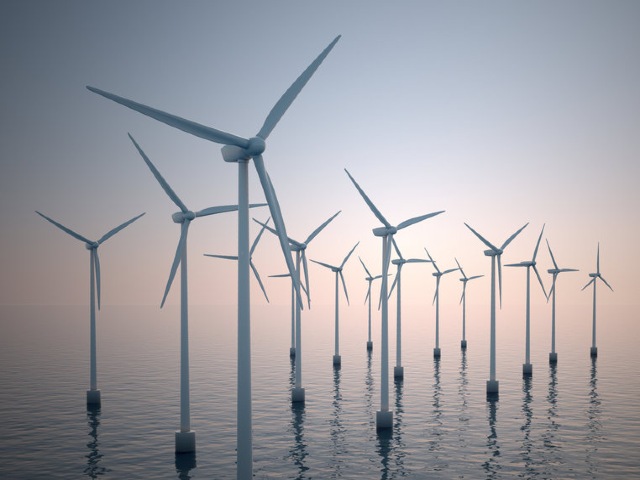
A new project spearheaded by researchers at UConn, in collaboration with Eversource Energy and major technology vendor partners, aims to deploy new real-time grid-enhancing technologies as part of an overall collaborative strategy to support the introduction of renewable energy sources in the Northeast region and across the country.
The project, launched through UConn’s Eversource Energy Center, received an infusion of support from the U.S. Department of Energy this month as one of four grant recipients through a federal program designed to develop technologies that improve grid reliability, optimize electricity infrastructure, and facilitate grid connection with renewable resources.
The federal grant will contribute $2.1 million to the overall $3.7 million total projected cost of the project, with industry partners including Eversource with a $1.1 million commitment to the project funding the balance of the project. The project outcomes will be shared with the broader industry and offer new findings to stakeholders for accelerating offshore wind integration to achieve the Unites States’ 30 GW offshore wind goal.
“This project is about how we’re going to accelerate secure and reliable integration of massive offshore wind and other types of large renewable energy projects into existing transmission systems, thereby achieving the state and national decarbonization goals,” says Junbo Zhao, an assistant professor at UConn, associate director for grid modernization and strategic partnerships at the Eversource Energy Center, and principle investigator of the project.
The project will deploy new solar-powered dynamic line rating, or DLR, sensors along the existing transmission lines in Massachusetts where the nation’s first utility-scale 800 MW offshore wind farm is slated to come online in late 2023 or early 2024 near Martha’s Vineyard.
The DLR sensors will be placed at strategic points on the 20.26-mile, 345-KV transmission line between the town of Carver and the Cape Cod Canal and will offer researchers and utility operators the opportunity to collect real-time data on things like ambient and conductor temperature, line angle, and wind speed. Those factors can then be used to calculate the load-bearing capacity of the lines at any given time and under any given condition.
Grid operators, Zhao says, have typically managed their systems conservatively for example, transmitting only 800 MW on a system while their actual limit is 1,000 MW due to security and reliability margin reserves.
The goal of the project is to demonstrate how DLR sensors might help grid operators to maximize that gap in the load on the existing transmission system and thereby accommodate the additional influx of power from new, renewable sources without compromising grid safety or resilience.
“We want to monitor the real-time limits for all of those critical transmission corridors or transmission lines, and then based on that information, we can do optimized dispatch of the power flows through the circuits so that we are able to integrate more renewable energies securely and reliably without investing in new transmission lines,” Zhao explains.
Investing in completely new transmission lines could be both extremely costly and time-consuming as well as creating regulatory challenges and potentially causing disruption to local communities.
The research team instead hopes to show how the utilities might deploy advanced technologies to leverage that unused capacity that already exists within the grid and hopes to use this project to serve as a leader for the rest of the country on how to integrate new, renewable energy sources into the existing transmission system.
“Since this is the nation’s first utility-scale, big offshore wind generation, if we demonstrate that this technology is going to work well, then developments in other regions like the Mid-Atlantic or Gulf Coast or Western areas they’re going to follow the same steps,” Anagnostou says. “I think those are quite significant impacts that this project will deliver.”